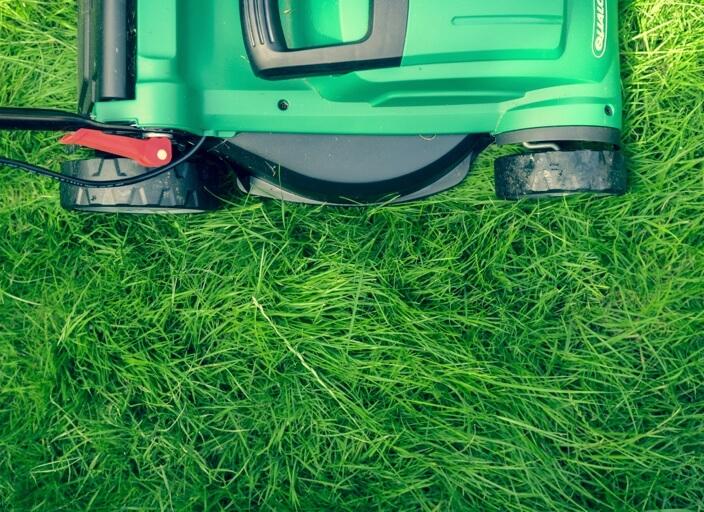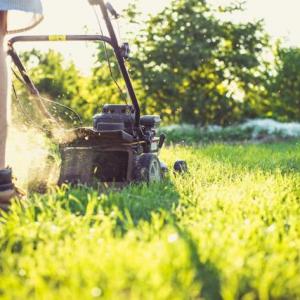

Timing is crucial when caring for your lawn. Even with proper weeding, watering, mowing, and aeration, a suffering lawn may still exist. Whether you choose professional lawn care services or DIY lawn care methods, it's critical that your lawn get the care it needs to grow at the right time. For instance, turning on your sprinklers too late in the day might increase the spread of infections (not to mention waste water). Here are some typical lawn maintenance blunders to avoid and tips on when to do each yard task to have the most beautiful grass on the block.
1. Deal with broadleaf weeds In the Dry
Some of the most typical broadleaf weeds include dandelions, clover, and creeping Charlie, but many more plants have the ability to spread swiftly and ruthlessly. You can choose to use a granular weed-and-feed solution or spray an organic liquid broadleaf weed killer to keep them under control.
When treating weeds that are actively developing, it is best to spot treat with an organic herbicide on a warm, bright day or to use granular materials on a foggy morning.
Why time is important When circumstances are ideal, broadleaf weed killers are very efficient when used appropriately. For instance, in order for weed-and-feed treatments to be successful, the spreader-applied grains must adhere to the weeds' leaves. The ideal time to apply is in the early morning when there is a thick dew on the grass since that demands moisture. Your time and money will be wasted if the grass isn't moist. Warmer temperatures often hasten the efficacy of liquid therapies. If, however, your summer has been hot and dry, you should water your grass first.
2. Using weed preventatives past due
Crabgrass and other weeds are controlled using preemergent herbicides, often known as weed preventers, which prevent the seeds from germination. It works wonderfully to apply early in the growth season; it's like giving your grass an anti-weed shot.
Apply the preventative when the forsythia blossoms stop blooming (can be from March to May).
Why time is important: You must apply weed preventers prior to germination in order to reap their benefits since they are ineffective against weeds that have already started to develop. Take your lead from Mother Nature since crabgrass, the main target of lawn weed preventers, often germinates just after forsythia blossoms. Apply a weed preventer like corn gluten flour and water as soon as possible to activate it when you detect forsythia shrubs losing their flowers (March to May, depending on your location).
Having to reseed Planting warm-season grasses in the late spring is best for cool-season grasses. However, keep in mind that using a crabgrass preventer at the same time as seeding your lawn will prevent any seedlings from sprouting, even some that you may wish to.
3. Failure to fertilize your lawn
Any plant, even grass, consumes nutrients from the earth as it develops. Over time, cutting grass and collecting clippings will deplete the soil's nutrients, necessitating the use of fertilizer. Instead, allowing the clippings to decay back into the soil can assist a bit, but you may still need to periodically replace the nutrients that are already there. You can determine how much you would need to put by doing a soil test annually. It matters when you fertilize your grass as well.
The ideal moment: North: Feed in the spring and autumn. Feed in spring and summer in the south.
Because grass has to be fed while it is actively growing, timing is important. This mostly refers to the spring and autumn growing seasons for cool-season grasses such bluegrass, fescue, and ryegrass. The best growth seasons for warm-season grasses like zoysia, bermuda, and St. Augustine are late spring and summer.
Additionally, late autumn (October or November), when growth has halted but the grass is still green, is an advantageous time to feed cool-season grasses. The following spring's look will be better because of the earlier greening. The best time to feed a cool-season lawn, according to experts, may be now.
Warm-season lawns shouldn't be fertilized in the autumn unless winter ryegrass has been overseeded on them. Additionally, avoid fertilizing any dormant grass, whether it be in the winter or summer (drought may make grass become dormant in the summer).
4. Using the incorrect time to aerate your lawn
You aerate, don't you? Walking on the dirt compacts it over time, causing thatch to accumulate. Aerating aids in re-loosening the soil and makes it easier for water to get to the roots of the grass.
Aerate while the ground is damp and the grass is actively growing.
Why time is important: It's a typical error to aerate dry, hard soil since aerators can't penetrate the soil deeply. Wait for a nice rain or water your grass before aerating. For cool-season grasses, the best times to aerate are more often in the spring and autumn, while summer is still suitable for well-watered lawns.
5. Watering later than necessary
Your lawn will likely need at least some watering, regardless of where you live or the kind of grass you have, to keep it green during prolonged summer dry periods.
Water is best consumed in the morning.
Why timing is important: Watering your grass in the morning is optimal. The sun's warmth will quickly dry the grass and reduce the likelihood of illness. Avoid watering during the hottest parts of the day, when most of the water may evaporate before the plants have a chance to absorb it, and watering at night, which might promote disease due to extended wetness.
When watering is required, do it once or twice a week for a sufficient amount of time to moisten the soil several inches below. Compared to regular, shallow watering, this promotes deep root growth, making your grass more drought-tolerant. It's a good idea to make sure you are adhering to any suggestions or limits that certain towns and municipalities may have about the schedule and frequency of watering in order to save waste.
6. Lack of Mowing Enough Times Per Week While it may seem obvious, how (and how frequently) you mow your lawn has a big impact on its health and look.
The ideal time to mow is when it is necessary, taking care to only remove a third of the height of your lawn at a time. If your mower is set at 2 inches, for instance, don't wait until the grass reaches 3 inches in height before mowing.
Why time is important: Since many homeowners mow their lawns on the weekends, their lawns are essentially cut seven days a week. Weekly mowing may be acceptable the most of the year. However, mowing can be required every four to five days in the spring during the active development phase. Longer gaps between cuts cause the grass to grow excessively tall, placing stress on the lawn and detracting from its aesthetic appeal. Due to their preference for long grass as a hiding place, fleas and ticks may be easily avoided by maintaining a well-kept lawn.
文章
共1条评论


sososo
2022年07月18日
0
I already want to lie on the lawn and bask in the sun😄









